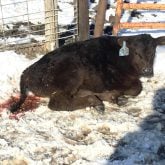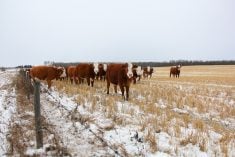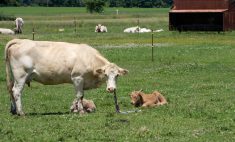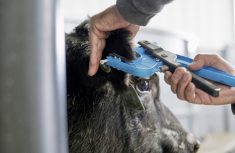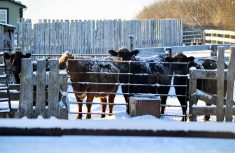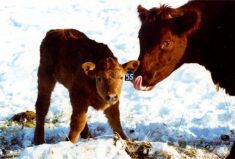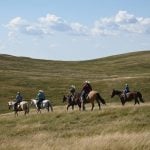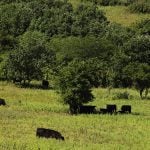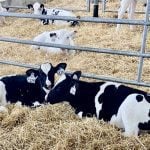Jim came to the office to talk about the 20 Angus-cross heifers he bought last month, bred to calve in February, a month before his cows. The heifers were in great condition and Jim had a clean, warm, well-bedded shed to protect heifers ready to calve. He could watch new mothers for a few days to be sure calves sucked, were dry and “mothered up” as his dad would say. Then it would be out to a calving pasture with access to sheltered corrals with lots of bedding.
What Jim hadn’t planned on was a cold snap of -25 C and wind. He missed seeing the imminent signs of parturition in one heifer and in the morning found a new calf unable to stand and shivering in the corner of the corral. His concern was, what could he do to save this calf — besides bringing it into the warmth of the calving shed — and others that might succumb to cold? Only 10 of 20 heifers had calved.
I explained to Jim that hypothermia claims many calves associated with our cold environment. Cold represents one of the biggest challenges faced by producers calving in winter. Two types of hypothermia exist. One is exposure or gradual hypothermia through the steady loss of body heat in a cold environment. Normal respiration, lack of adequate hair coat, body flesh or weather protection all play a part. This type of hypothermia affects all classes of livestock but particularly affects young, old and thin animals. Another type happens when animals suddenly lose heat due to a wet, saturated hair coat in cold (immersion hypothermia). Immersion hypothermia occurs during the birthing process. A calf’s body temperature falls below normal due to a slow birth (dystocia) and is then extenuated by delayed standing and nursing.
Read Also
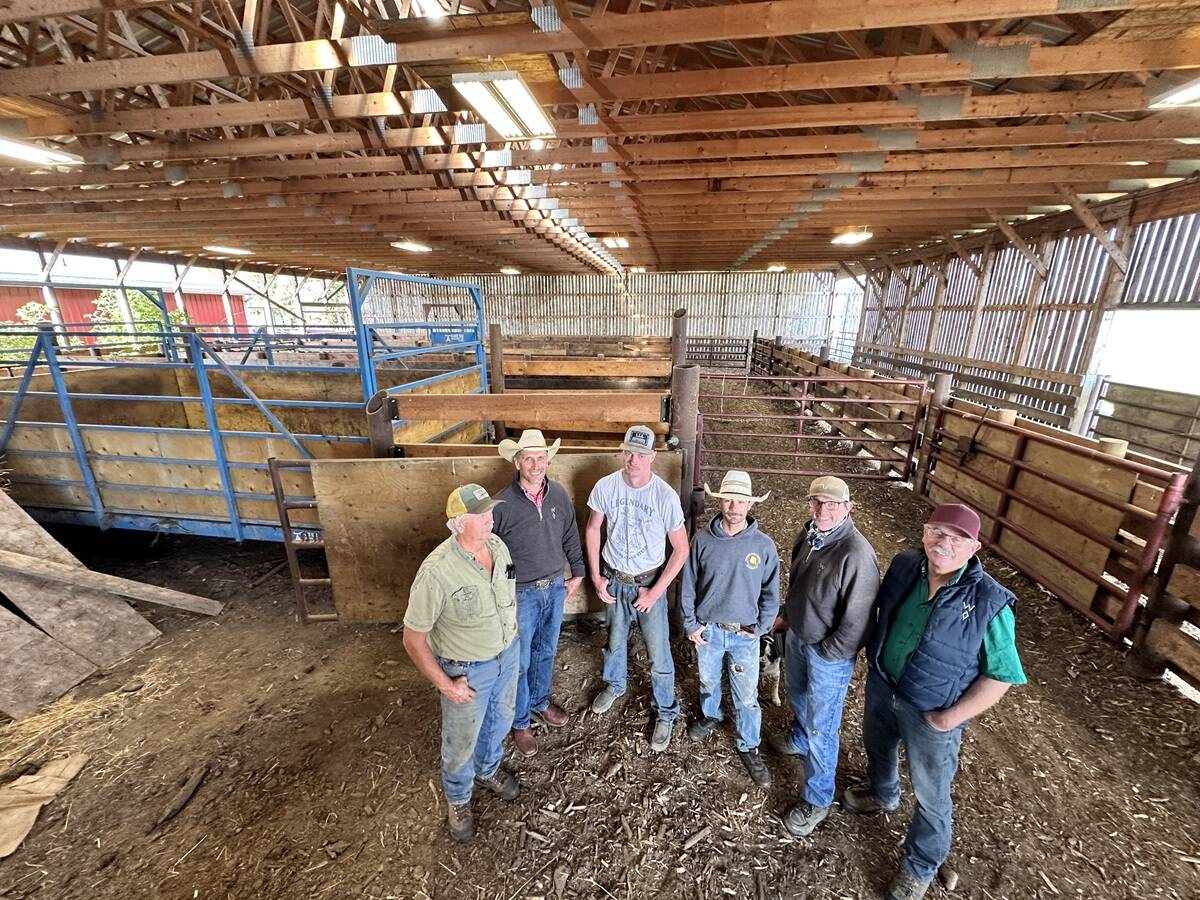
Farm families work together to graze cropland with cattle in the fall
These Alberta farm families have separate operations, but work together to manage their land
Returning the calf’s core body temperature to normal — 100 F for newborn calves — is the immediate priority. If possible, bring close-to-calving cows indoors to calve in a heavily bedded, clean pen. If calving outdoors, make sure there is dry, clean ground available without a damp manure pack. If the cow calves outdoors, bring the calf in until warm and dry if the calf is showing signs of hypothermia and/or there are no natural windbreaks available.
The two most important factors in calf survival are warmth and colostrum. Colostrum can be delivered by an esophageal feeder.
Faced with cold, the body responds in two ways: shivering, to increase muscle heat production, and blood shunting, to reduce heat loss by diverting blood flow away from the body extremities to the body core. A cold nostril and pale, cold hooves are early signs that blood is being shunted away from the body’s extremities. In the case of newborn calves, severe shivering may interfere with their ability to stand and suckle. Erratic behaviour, confusion and a clumsy gait are all signs of mild hypothermia. Producers often refer to these as “dummy” calves. Severe hypothermia results if body temperature drops below 94 F. Shunting of blood from extremities worsens. Frozen ears, tails and feet often result. Pulse and respiration begin to slow as the body core cools to 88 F. Below 86 F, signs of life are very difficult to detect, and the calf may be mistaken for dead.
Ways to warm hypothermic calves:
- Using floorboard heaters of pickup trucks
- Submersing wet calves in a warm bath. The water should be gradually warmed to 100 F (37.7 C) and changed to keep it at that temperature.
- Placing calves next to the heater in the house.
- Placing the calf under a heat lamp. Be careful about contact with the lamp and burning.
- Warming blankets. Change as needed
- Placing in a hot box or warming box. Air movement is important.
- Having your vet administer warm IV fluids.
Once the calf has been warmed, provide colostrum and maintain body temperature.
With hypothermia, the level of consciousness deteriorates from confusion to incoherence and eventual unconsciousness. The pupils of the eyes will be dilated and fixed. The pulse may be undetectable. Occasional gasps of respiration at a rate as low as four or five per minute may be the only clue that the calf is still alive. Heart failure may be the actual cause of death.
Body temperature is just one piece of the puzzle when identifying illness in calves. Just like other warm-blooded mammals, a calf’s core temperature does not depend on the environment. The normal body temperature range for a bovine calf is 100 F to 102 F. Most of the time this body temperature will stay relatively consistent. Calves maintain body temperature by converting the food they eat into body heat.
Small changes in body heat occur every day. During sleep, body temperature tends to decrease. During strenuous activity, it will likely increase. High summertime temperatures will also cause a slight increase in body temperature. One exception to normal body temperature fluctuation is an increase in temperature due to illness, called fever. Calves exhibiting any signs of illness — such as not eating, depression, lethargy, nasal discharge, ocular discharge or scours — need closer examination. c




